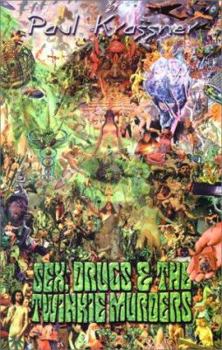Sex, Drugs, & The Twinkie Murders
No Synopsis Available.
Format:Paperback
Language:English
ISBN:1559502061
ISBN13:9781559502061
Release Date:January 2000
Publisher:Loompanics Unlimited
Length:362 Pages
Weight:1.20 lbs.
Dimensions:0.9" x 5.5" x 8.4"
Customer Reviews
1 rating
A tour de force of Underground reportage
Published by Thriftbooks.com User , 23 years ago
Paul Krassner's reporting style is part Gonzo, part radical/hippie sensibilities, part grinning wiseass. He gets into his stories by becoming part of them; sometimes, by veering into the center of the action; other times, by perching.I find Krassner's reportorial meddling in proportion to the sanity of the story's surroundings. When he's forced to perch (the Patty Hearst trial, the Moscone-Milk murders or Jonestown), he's still meddling with the players, but the events themselves are so mired in political agenda, shoddy lawyering, power freaks gone mad, and (of course) Krassner's own paranoia, that making sense of the facts becomes a struggle against sheer exhaustion.His style in his California social landscape pieces keep good company with Joan Didion's work in Slouching towards Bethlehem. Unlike Didion, who is practically pH-neutral in her reporting, Krassner is hip to his scenes. In this collection he covers New Age guru Terence McKenna and a Swinger's Convention. Like Didion, though, he can participate without losing his role as a reporter to us. He reserves comment in places where I suspected he might well have interjected an insight, but you might also say he just lets his subjects speak for themselves.Of particular note: Krassner's collation of facts around Patty Hearst's kidnapping and trial for bank robbery show how exhaustion can beat the reporter down. The center cannot hold in those stories, and Krassner doesn't try to manufacture a stable one. The Hearst pieces best reflect Krassner's conviction that people with power have no use for reason unless it suits their purpose. That's a harsh world, one that's as difficult to deny as it is to accept.





